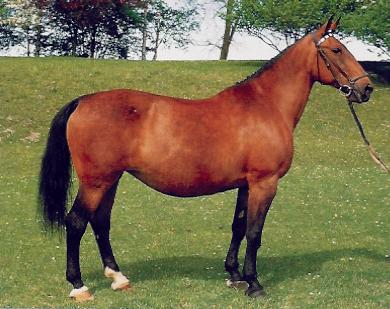The Bavarian horse
Often classified as a draught horse, the Bavarian horse possesses qualities that enable it to be used in a variety of ways, particularly as a sport horse. The breeding objective behind the Bavarian was to create an animal that would be competitive in all equestrian sports. Although heavy, it remains smaller than the Oldenburg. The Bavarian horse is often compared with the Hanoverian horse. This breed is found particularly in Germany, but also mainly in England.

Caractère et aptitudes du cheval
Docile and gentle, these enduring, agile horses are renowned for being unsuspecting and easy to train.
Utilisations du cheval
Originally a warhorse and a light draught horse on the farm, Bavarians have become excellent sport horses for show jumping and dressage. The origins of the Warm-blooded Bavarian go back to the time of the Crusades, when its ancestor, the Rottaler, lived in the Rott valley in Lower Bavaria. In the 18th century, it was improved by crossbreeding with Hanoverian stallions, Cleveland Bais, Norman Cobs, Trakehners and Oldenburgs in the 19th century. A late addition of Thoroughbreds was made to lighten the model, called Bavarian since I960. Among the various ailments that can affect horses, the Bavarian horse is particularly prone to osteochondrosis.
Morphologie du cheval
Fairly long, narrow head. Fairly massive body, powerful musculature. Graceful neck. Strong, resistant, short limbs. Tail set high. Coat: chestnut. Size: 1.60 to 1.75 m.
Find out more: The Bavarian horse


